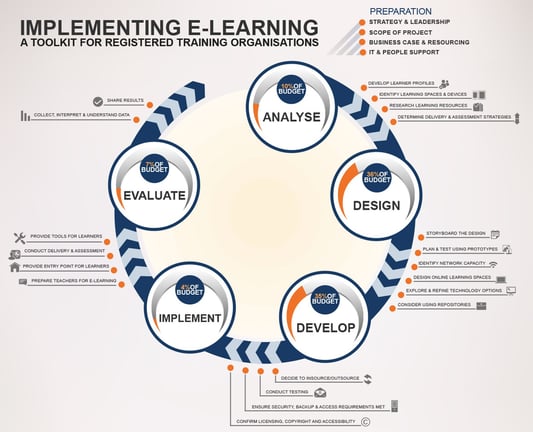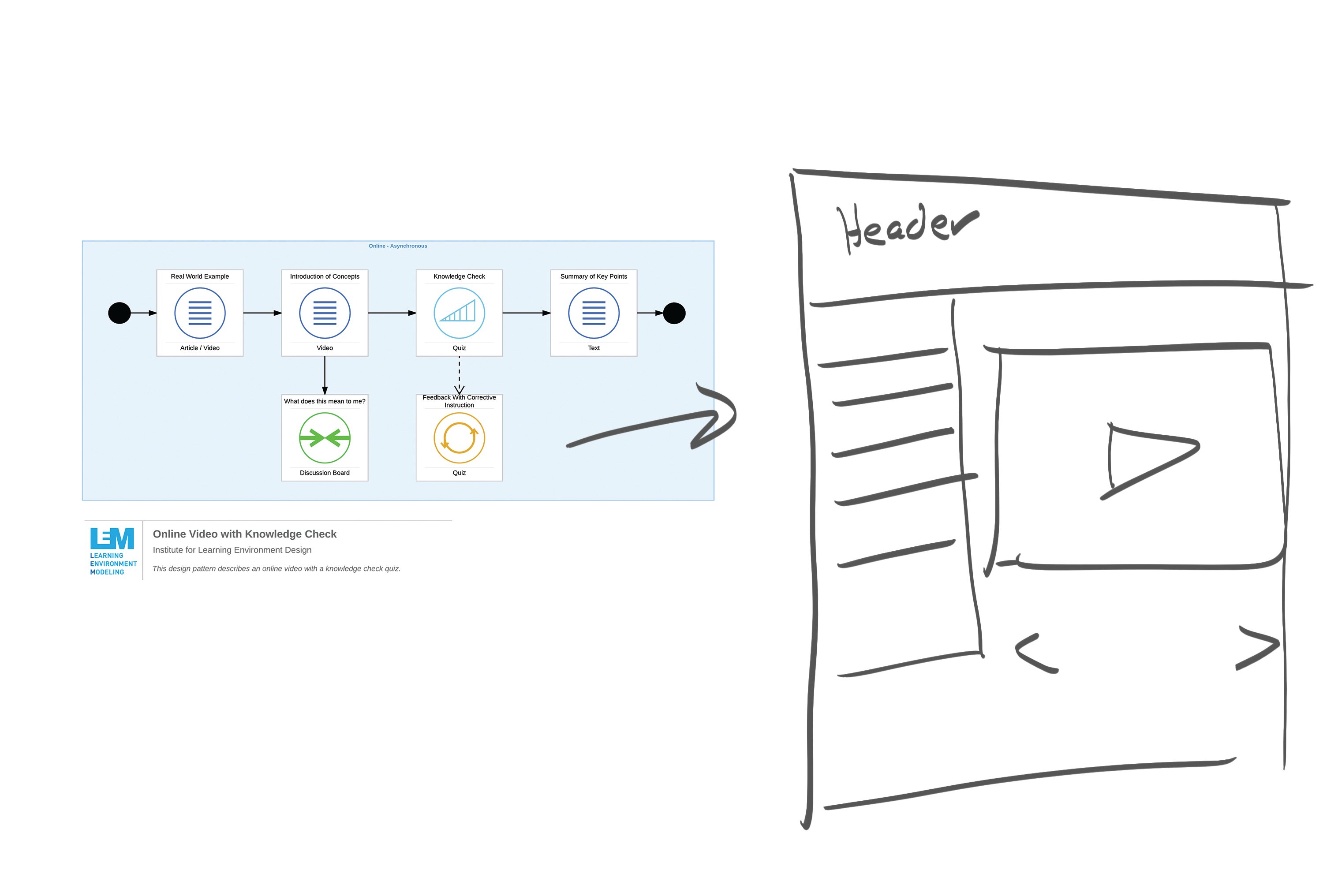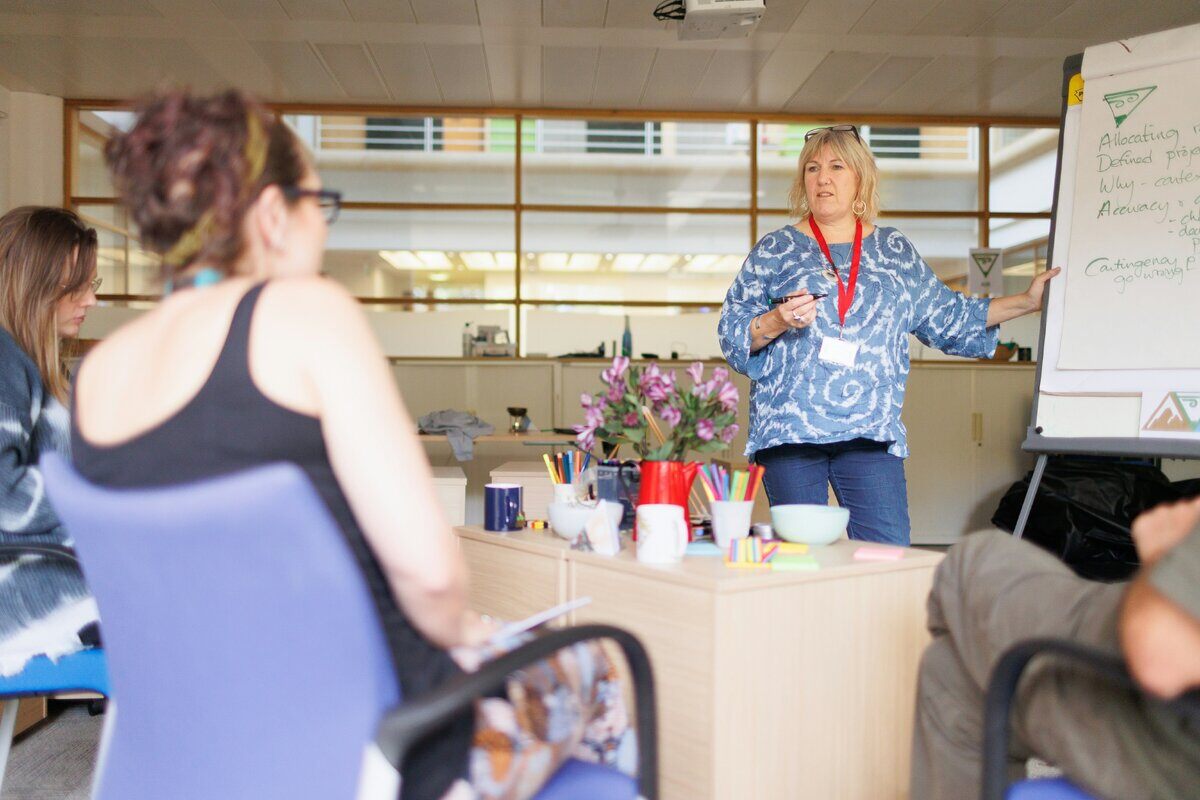
Using LEM™ with ADDIE
One of the most common instructional design models in use today is the Analyze, Design, Develop, Implement, and Evaluate (ADDIE) model. This model is commonly applied across diverse organizational contexts as a way of structuring instructional design projects.
In this article, I describe a few ways a visual planning system called Learning Environment Modeling™ can enhance the use of the ADDIE model for creating instructional materials, courses, and programs.
What is ADDIE and Why Does it Matter?
The ADDIE model is a widely adopted framework used for designing instructional systems. Here is an illustration of the framework along with brief descriptions for each phase.

The ADDIE model gives us a proven and predicable way to manage the creation of instructional programs. However, it does not necessarily provide support for collaboration and design decision making. ADDIE is a framework that requires the use of additional tools and methods.
This “gap” is where Learning Environment Modeling™ provides a valuable tool for those using the ADDIE model.
What is Learning Environment Modeling™?
Learning Environment Modeling™ is a system and method for visually representing the design of instructional materials, courses, and programs. LEM™ is a suite of tools that uses a simple language to visualize the core elements of any learning environment. This suite of visualization tools and language is used to create blueprints that show the components, structure, and sequence of instructional systems.
Using LEM™ with ADDIE
Learning Environment Modeling™ is a visual planning system for creating learning materials, courses, and even entire programs. LEM™ enhances planning and strategy process by making the components and decision-making visual and approachable. Using a visualization method, such as LEM™ with ADDIE support efficiency and effectiveness across each of the phases.
The following sections of this article highlights a few ways LEM™ can be used in each phase of ADDIE.
Analyze
The Analyze step in the ADDIE model is focused on learning about the learner, the environmental needs, and vision for a learning environment. During the Analyze step, LEM™ helps us organize and visualize these analysis activities.
For example, you might use LEM™ to create a diagnostic blueprint of an existing program or course to better relate to learners’ current experiences. This helps build empathy while providing a visual to support a needs and gap analysis. LEM can also be used to visualize current ways people are currently learning knowledge or skills in a job task analysis. LEM™ is used in combination with interviews, surveys, or other research methods to visualize findings and results while providing a common method for enhancing understanding of these outcomes.
Design
The Design step in ADDIE is focused on making key design decisions about the instructional system being created. LEM gives us a way to visualize and communicate our design ideas with our teams and clients during this phase.
For example, during the Design phase, you may begin by developing and aligning learning objectives. Instead of hiding this information in a design guide, LEM™ can visualize the alignment between learning objectives and evidence of learning.

Another key task of the design phase of ADDIE is to determine learning strategies to be used. LEM™ helps to visualize these design patterns so they can be leveraged across the project. This adds efficiency and clarity in the planning and strategy process.

Once these strategy design patterns are created, they can be combined to create a complete blueprint for the materials, courses, or programs. Having a visual blueprint allows you to see and quickly modify the design of the program without committing extensive time and resources. This also encourages feedback and input from others without relying on extensive documentation early in the design process.
Develop
During the Develop step in the ADDIE model, the goal is to create the materials and spaces needed for the instructional system. This might involve student materials, online resources, or instructor guides.
One the biggest challenges faced when using the ADDIE model is there is a translation barrier between what we design and what often gets created. LEM™ minimizes this transition because it uses common language and visual method for transferring design plans and ideas from an invisible or conceptual format to a finished product.

Using a LEM™ blueprint during the development phase supports prototyping and rapid transition between the design plan to a developed project.
Implement
The Implement phase of the ADDIE model is focused on delivering the learning environment and making it available to the learner and instructor. This often involves a pilot program to test the program with representative learners.
During this phase, you may draw on LEM™ as a way to communicate facilitation plans and the vision for the learning environment with instructors and learners. The visual blueprint provides another tool for setting expectations and demonstrating alignment between the learning experience and the intended learning outcome.
The LEM™ blueprints provide a common reference to go back to for managing, facilitating, and adapting learning environments as learning experiences are happening.
Evaluate
The Evaluate step in the ADDIE model is focused on collecting data and determining the efficacy of the program. You may use LEM™ as a way of connecting data with design plans to determine the overall success for the instructional system.
Having a visual LEM™ blueprint enables new ways of evaluating learning experiences. You can leverage any evaluation method while still having a visual to compare your findings and determine needed enhancements or changes. Also, because the blueprint is created using a common design language, you’ll be able to be more strategic, intentional, and efficient about needed changes.
Summary
When applied to the ADDIE model, LEM™ gives us new way of creating design plans and communicating through the ADDIE process. LEM™ is a revolutionary tool for enhancing the way people use the ADDIE model. It helps to clarify uncertainty and turns design insights and ideas into actionable plans and results.
Additional Resources
You can learn more about Learning Environment Modeling™ by visiting the Institute for Learning Environment Design website at https://lxstudio.com/learning-experience-design/
Note: this article was adapted from http://www.flatverb.com/learning-environment-design/applying-lem-to-addie/





